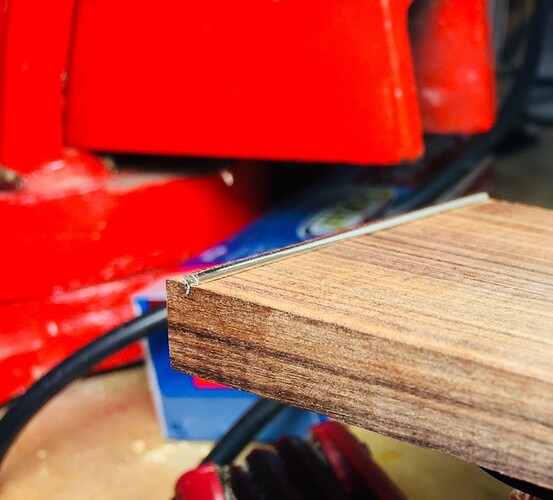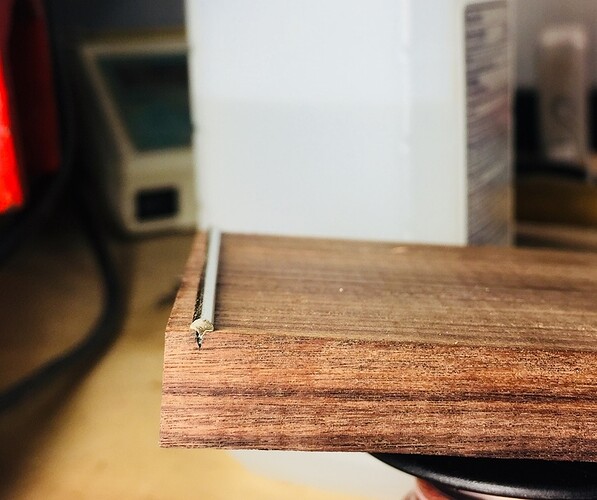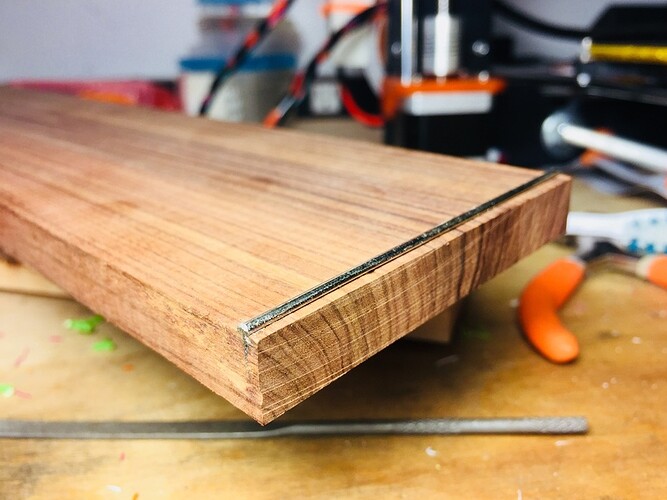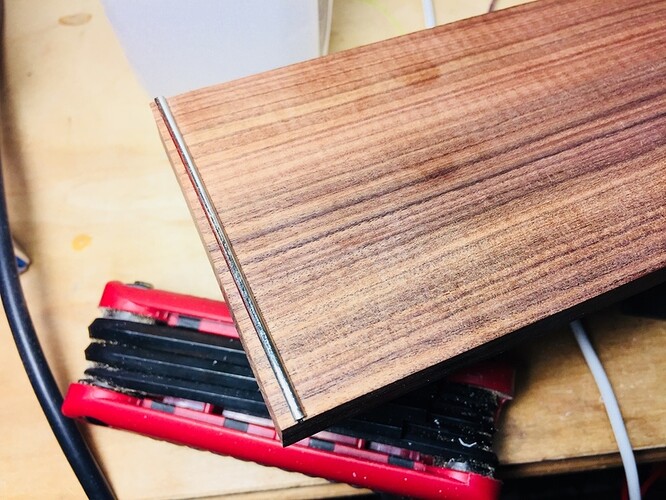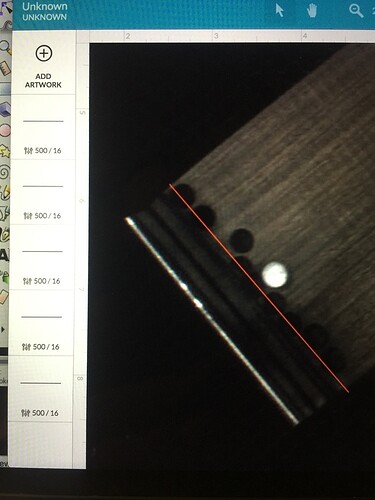Anyone got recommended settings for speed/pwr for maximum ablation minimum charring? Assuming a hardwood… ![]() …
…
I don’t have any rosewood to try but I do Baltic Birch ply at that thicknes. Full power, slow WAY down. I’m doing two passes at 110 zooms and focus just below the top.
Every wood is different. For example, Spanish cedar chars quickly at a low temperature, whereas poplar cuts like butter with minimal to no char.
I don’t know any settings off the top of my head, but I would jut run a series of singles lines across the end of the piece to see how they do. I’d start with full speed/full power, check the depth on that, then change it up as needed.
Definitely let us know how it goes!
Keep in mind that rosewood is potentially toxic.
There is a reason why Rosewood is used as a fretboard material. It is very hard and wears well. I have cut through 0.433" red oak with a Pro tube and some difficulty. The result had significant charing and a noticeable “lean” to the edge. Rosewood meant for fretboards is much, much harder. I wouldn’t think the same thickness of rosewood possible and end up with something useable. Especially not a basic.
Also 0.44" is about twice as thick as that used on most fretboards. Thinking the blank was meant to be planed to thickness first. I haven’t yet checked the kerf to see if using the laser for fret slots would work well.
My test with 0.023" fret slots worked well.
On this 0.44" rosewood, used the 0.023" wide rectangle from the below file, with the below engrave settings… It might have gone a little too deep, but the result was nice.
fretboard-slot-cut.svg.zip (1.2 KB)
No Kerf compensation, and it seems to fit tight (had to hammer the fret wire in).
Yeah, unfortunate. I dont have a planer, and I dont want to spend the time designing the 3D curve (which all fretboards normally have) or clamping it into my CNC machine for those planing ops… This is meant for a jewelery box with guitar fretboard top, so it can be a little thick - no problem ![]()
Or you could build a banjo or dulcimer. Flat fretboards.
Nose Cancer!
Nah, I’m building a jewelery box… No need for a banjo or a dulcimer. ha!
BTW: Inkscape has a fretboard extension. Does the calculations and layout for you.
15 passes at this setting only got about quarter way down through the .44” Rosewood
Same with 300 speed
Try this but with .44 for hight.
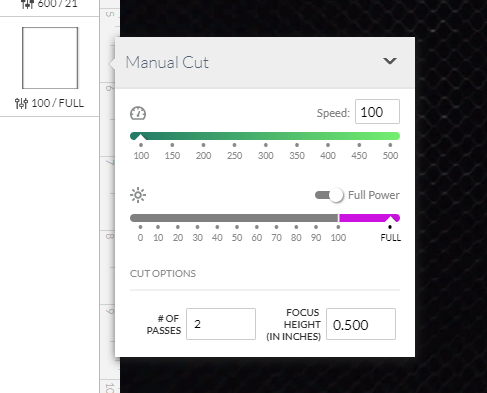
I tried 125 speed and 60 pwr, 2 passes on top and another 2 passes on bottom. Managed to get it perfectly registered. Did another 3 passes on bottom at 300 speed and 60pwr (2 passes total on top, 5 passes total on bottom)
The board is still one piece and pretty solid. But when I bend it I can hear some faint cracking noises and see it flexing slightly at the weak spot. It doesn’t bend easily by hand, takes a lot of effort with my two hands. But balancing the board with the cutline directly on a stair railing and pushing on both ends, I can see it bend more at the weak spot and hear more of the cracking noises coming from there
Do I dare crack it?? Or should I get out the saw and do this the right way. ![]()
The double line was to compensate for the width of my saw. ![]()
By the way. My method of registration was awesome. I plastered paper over my crumbtray honeycomb surface. Then I did a 500/1 cut of all the cutting lines onto the paper. Then I had myself a guide for the rosewood board: just lay it on top the cut lines drawn on the paper. After the job finished, it was very simple to flip the rosewood over and line up again.
Basically i ignored the imperfect camera. I left the art in the app and hit print again and again. This guide Was especially important because I needed the full 3” width of this board. So I didn’t want to be off.
Decided to do some archeology:
On the end I had a hair line cut to square up the piece… I used an exacto blade and cracked off pieces so that we could see just how deep the laser went:
Is that Rosewood a flooring plank?
I ask because there’s something about the finish and your troubles cutting it, that is screaming “This is a flooring plank” at me.
I had an even harder time cutting a piece of bamboo that was a flooring sample. 12 passes at high power and low speed barely touched it, although it did engrave wonderfully.
Turns out solid woods turned into flooring are often highly compressed and impregnated with tough resins, to make them even harder than normal for heavy use on floors.
It’s from here:
Bolivian Rosewood fretboard blank
http://www.bellforestproducts.com/fretboard-blanks/
Ah OK. Looks like regular solid wood then, tough stuff!
That site has a wonderful selection!
This thread is a fascinating read. Thanks for sharing! Love the wood source link. I haven’t looked to see if The Matrix has a set of materials source links, but that would be helpful.
I have a 1/4" thick board that was made by gluing strips of oak, maple, walnut, and purpleheart wood.
My father had made many similar boards for making hinged boxes. I have the last of his stock.
I wanted to make something from one of the boards with my glowforge. Can you offer any guidance on how to determine the best speed and power to cur through this material with the different properties?

